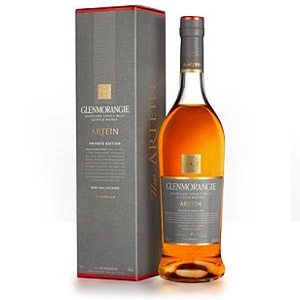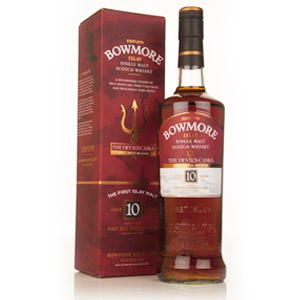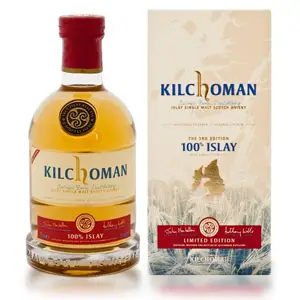Glenmorangie has become the king of wine finishes. With their wildly popular Nectar d’Or (Sauternes wine finish), and their continued commitment to limited-edition releases and out-of-the-box experimentation. Their latest, the Artein, is finished in casks of Sassicaia, a red Italian wine – one of the “Super Tuscans”. A vatting of two-thirds 15 year-old Glenmorangie with one-third 21 year-old, both matured in American white oak ex-bourbon casks, Artein then spends an additional “period of time” (probably less than a year) in the wine casks. Frankly, I’d never heard of Sassicaia or “Super Tuscans” until researching this post. Clearly, I’m not much of a wine guy.
The ‘Artein’ moniker (Scots Gaelic for ‘stone’) refers to both the rocky soil in which the Sassicaia vines grow, and the mineral influence of the natural Scottish spring water used to make the whisky. The story is a bit of a stretch, but it makes for some gripping marketing material. 😉
The interesting thing that I’ve noticed about wine – specifically red wine – finishes (I’ve only had a handful), they typically don’t absorb the kinds of flavors one associates with red wines – deep berries, dark red fruits, licorice, and spices. Instead, these whiskies tend to become somewhat astringent – sour raspberries and an overwhelming aspect of grappa – the Italian spirit created by distilling a mash of pressed grape skins and seeds. The grappa – an unforgettable barrage on the palate that mostly tastes like sour grape skins – dominates here as well:
Nose: Cranberry in droves up front, then grape skins and grappa cover everything like a wet blanket.
Palate: Silky and robust. Red apple, fresh tart cranberries, lots of bright fresh fruits and fruit candies (fruit chews).
Finish: Malty at last, with dried blueberries. Not bitter! Medium long.
With Water: A splash of water dulls the nose and adds some citrus. Rounds out the palate, but seems unnecessary to me.
Overall: Very nice, but nothing really special – just a wine finish Glenmo, and an education in the domineering effect that red wine casks have on maturing scotch. I might pay $60, not $80.


About The Distillery
Glenmorangie has been an innovator in the industry for years, pioneering cask expressions and experimental bottlings of their exceptional Highland whisky. Often cited as the biggest-selling whisky in Scotland, Glenmorangie is also attracting a lot of international attention, winning awards left and right. Among their cask-aged expressions are the Nectar D’Or (matured in French Sauternes casks after 10 years minimum in bourbon barrels), Quinta Ruban (matured in port barrels), Lasanta (matured in oloroso sherry casks), and more. Glenmorangie sources its oak casks in the Ozark mountains and loans them for four years to the Jack Daniels distillery before using them for Scotch. Glenmorangie’s water flows from the Tarlogie Springs in the hills above the distillery, over sandstone (yielding hard water) and picks up flavor components from the clover and heather in the hills before entering the distillery, where 24 very long-necked stills called the “giraffes” make Glenmorangie’s classic Highland malt. Glenmorangie, like Ardbeg, is owned by luxury giant LVMH (Louis Vuitton Moët Hennessy).








Even though this was not a very favorable review, I’m dying to try this stuff. I didn’t even know it existed until I read this review. I’m a big fan of Glenmo wine cask finishes, having tried the basic three (I can’t find any of the others I’m my area). I’m interested to read your thoughts on the other two, as Nectar D’Or is my least favorite of the three. I always have a bottle of the other two on hand.
Hi Kevin, I haven’t done a “formal” tasting of the other two (Lasanta and Quinta Ruban), although I’ve had both in a bar. My impression was that they both had similar elements – lots of dark fruits, black cherry, raisin, and black currant. I found the Lasanta to be a pretty typical sherry-finished Highlander, and the Quinta Ruban to be decent and quite reasonably priced for a port finish (which aren’t common).
Bill Lumsden did an interview (it won’t let me embed the link, but it’s on Single Malt TV). It was hard to tell how long he meant to say this was in the wine cask, but I think he was saying four years.
I nearly always agree with your observations, but on this whisky I have to disagree. This is a wonderful dram that offers so much more than you suggest.